A religion, sometimes referred to as a cult, was an organized belief system. Some beings in the galaxy held to religions.

Jedha City was a pilgrimage place for many religious traditions.
Religion usually referred to a being's spiritual beliefs and might include some belief in an afterlife. They also might include the belief in a god or the Force, though this was not always the case. For instance, Mandalorian adherents to the Way of the Mandalore appeared not to show any reverence towards a god or the Force, and instead cherished weaponry, honor, and their armor. The people of Serenno worshiped seven gods. The Central Isopter, on the other hand, worshiped death. Many religions followed some form of creed or code. The Jedi Order adhered to its Jedi Code, while their enemies, the Sith, followed the Code of the Sith. Likewise, many religions followed a foundational set of scriptures, such as the sacred Jedi texts observed by members of the Jedi Order. The Order of the Esoteric Pulsar followed the Book of Stars.
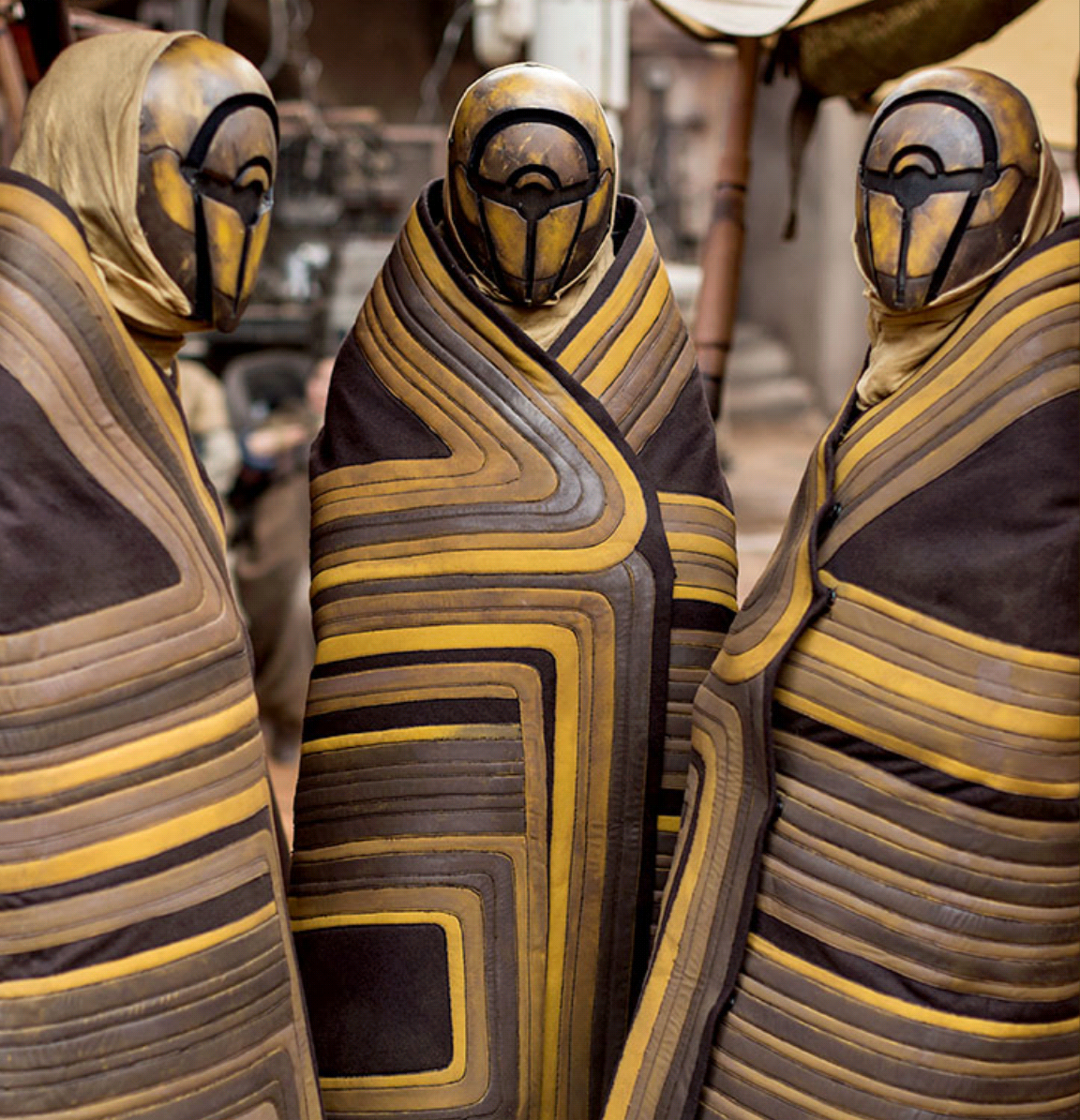
Central Isopter cultists
Whenever a religion fell outside the mainstream, it was often referred to as a "cult." Many of the known cults in the galaxy adhered to the dark side of the Force, making following them even more stigmatized. In the aftermath of the Battle of Endor, multiple Sith cults emerged to worship the deposed and presumed deceased Sith Lord Darth Sidious and his apprentice Darth Vader. Among these were the the Acolytes of the Beyond, Alazmec of Winsit, and the Sith Eternal. Similarly, it was possible for splinter groups to form within religions who disagreed with the orthodox members of their orders. An example of this was the Ordu Aspectu, a Jedi heresy, who sought eternal life through technological means, a pursuit that resulted in open conflict with the Jedi Order. The orthodox Jedi and Ordu-sect eventually made peace. The Eternal Rur later destroyed both the breakaway sect and all orthodox Jedi present in the Citadel of Rur.
Many religions had sites scattered throughout the galaxy that were holy or sacred to them. Jedha City was a gathering place for a plethora of the galaxy's Force-based religions, including the Ninn Orthodoxy, the Guardians of the Whills, the Phirmists, and the Zealots of Psusan, until the city's destruction by the first Death Star. Jedha's importance to various Force religions had led to the establishment of the Convocation of the Force, which presented common leadership for all non-dark side faiths who joined during the High Republic Era.Ilum was a sacred planet for the Jedi Order, where they would harvest kyber crystals for their lightsabers; and Moraband was a dark but sacred world to the Sith and was home to their burial grounds.
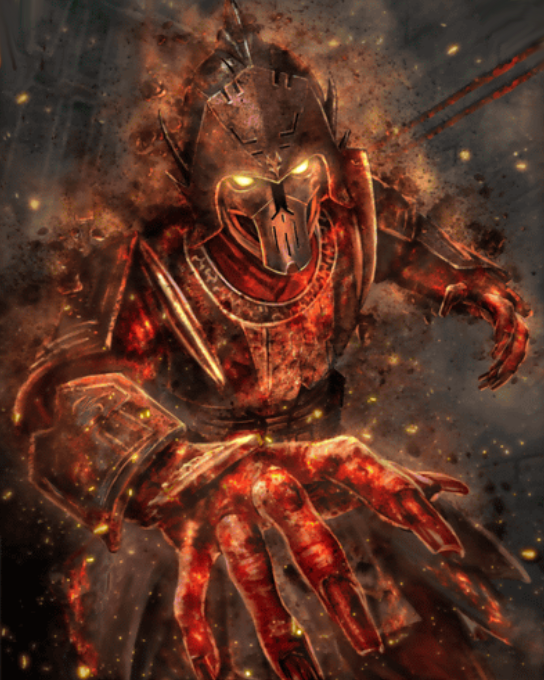
Darth Bane carried on the Sith religion after it was thought to be eradicated by the Jedi.
At some point in the ancient past, the Prime Jedi created the Jedi Order on Ahch-To. The sacred Jedi texts, written at the dawn of the Jedi Order, contained some of the earliest religious texts to reference the Force. The Rammahgon in particular contained a number of conflicting origin stories for both the universe and the Force. Soon, the Jedi Order took to the stars, settling on Ossus and Tython among other worlds. At some unknown point, Ahch-To was abandoned by the Jedi and left in the hands of the Caretakers.
The ancient enemies of the Jedi, the Sith, were born from a schism in the Jedi Order led by a rogue Jedi during the Hundred-Year Darkness as the rogue Jedi and his followers believed that the true potential of the Force laid in using the powers of the dark side of the Force. Conflict between these two Force religions led to countless wars that resulted in the Sith Empire in control of the galaxy. Ultimately, however, the Jedi defeated the Sith and thought them to be extinct. Afterwards, the Galactic Republic sought to scrub history clean of all mentions of the Sith religion, even forbidding protocol droids from translating their runic language. However, the Sith Lord Darth Bane secretly carried on the Sith religion in the form of the Rule of Two, allowing the Sith Order to survive its supposed extinction.
In ancient times, the Jedi once also fought a series of conflicts against the Mandalorians, who subscribed to a martial religion. The Mandalorian crusades were undertaken by Mandalorian crusaders, which put them at conflict with the Jedi Order. Ultimately, however, the Mandalorian cataclysm between Mandalorian warlords and the Jedi Order left the surface of Mandalorian homeworld of Mandalore devastated, rendering it uninhabitable outside of domed cities. It was after these conflicts that the Jedi fought against the Sith and thought their ancient order to be extinct.
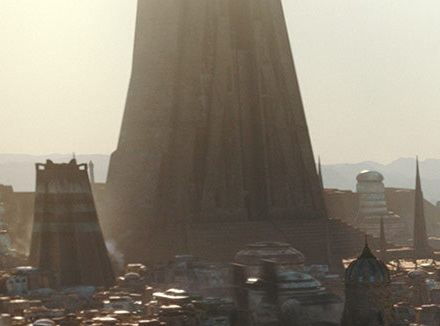
The Temple of the Kyber, a holy site in the Holy City on Jedha.
The ancient Jedi also fought a religious civil war with a splinter group, the Ordu Aspectu, who disagreed with the orthodox members of the Order over the violence they perceived was perpetrated by the Jedi. Galactic historians differ on what ultimately caused the conflict between the two sects of the Jedi Order, but, in the end, the rogue Jedi Rur and his followers were wiped out by the orthodox Jedi.
Around the same time, more than 5,000 years before the Galactic Civil War, the holy city of NiJedha was built on the moon of Jedha. The city hosted the Temple of the Kyber and came to be a site of pilgrimage for a plethora of Force religions. The Jedi Order eventually established itself on Jedha, as well, taking up in the Temple of the Kyber. Despite its religious pluralism, the moon became so associated with the Jedi that it was proposed by historians as a possible location for the first Jedi temple.
With the Sith seemingly defeated, the Jedi established their main temple on the galactic capital of Coruscant, capping off an ancient Sith shrine, which had also been the site of worship for a number of religious cults throughout the centuries. A number of religions prospered during the Republic Era. Though the Sith were gone, the dark side had its adherents in the form of the Yacombe and apostate members of the Sorcerers of Tund. Many of their relics came to rest in the Archive of Forbidden Artifacts, a Bogan Collection in the Jedi Archives on Coruscant. The Yacombe would later abandon the dark side.
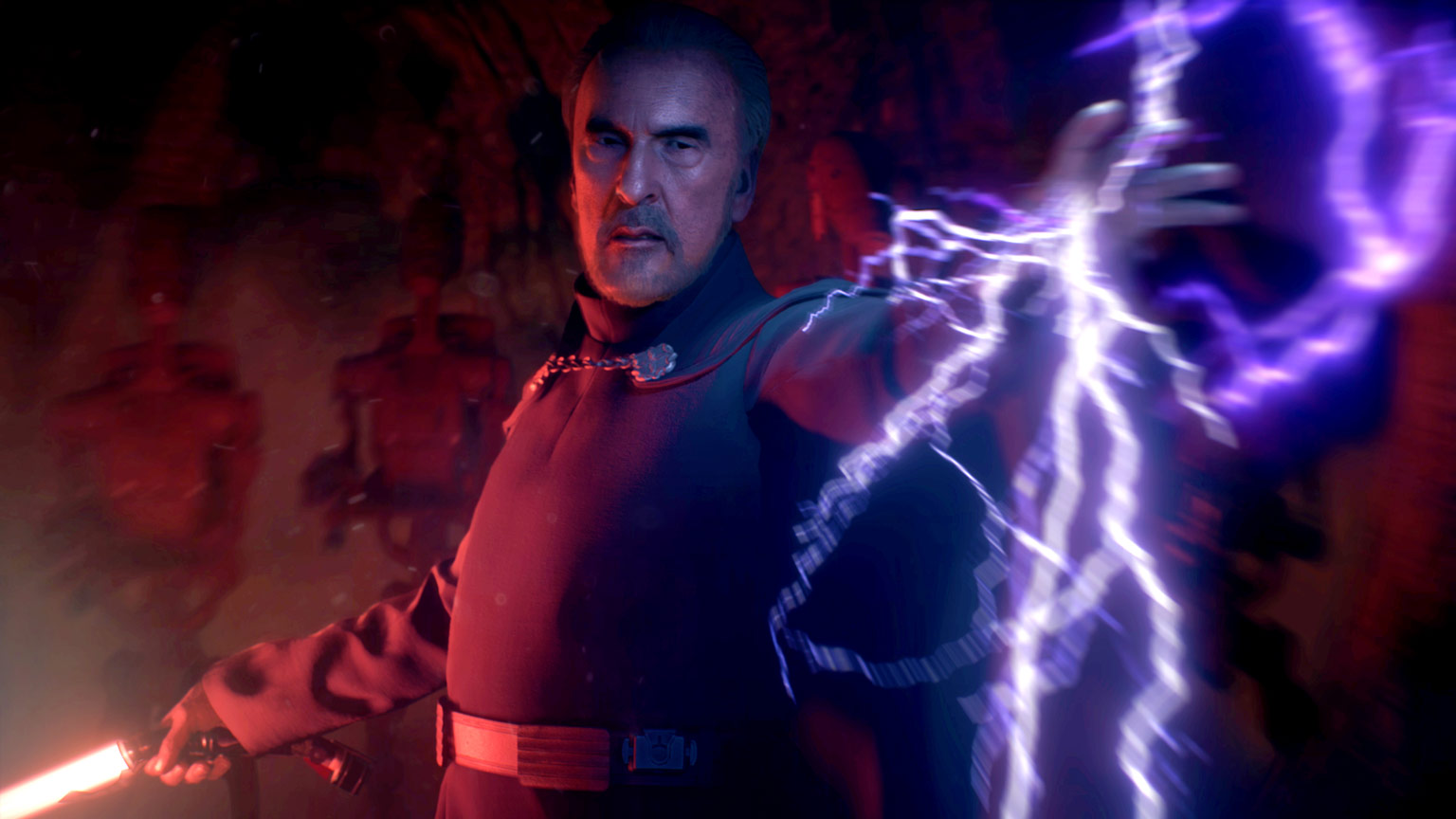
Dooku killed the Presagers of Hakotei with Force lightning.
The Presagers of Hakotei—a dark side cult that was obsessed with sacrificing living beings in order to receive visions of the future—were also active on the Outer Rim planet of Asusto, which was strong in the dark side of the Force. The Jedi had long thought the Presagers extinct, but some of the witches survived, and traded Sith artifacts on the black market in the hopes of luring a powerful Jedi to them. They succeeded in roping in a young Dooku, as well as Jedi Master Lene Kostana and her Padawan Sifo-Dyas. Dooku ultimately wiped out the coven, marking his first significant step down the dark path.
In 32 BBY, the hidden Sith revealed themselves during the Invasion of Naboo when Darth Maul appeared to Qui-Gon Jinn on Tatooine. Though Maul was defeated and thought dead during the Battle of Naboo, the Jedi knew there to be at least one more Sith Lord waiting in the shadows. This Sith Lord was, unbeknownst to them at the time, the newly elected Supreme Chancellor of the Republic, Sheev Palpatine, secretly known as Darth Sidious.

Death Watch continued the martial religion of Mandalore during the Clone Wars.
Sidious, with his second apprentice Darth Tyranus, engineered the Clone Wars to draw the Jedi into a trap. At the end of the war, Sidious declared himself Emperor and reorganized the Republic into the Galactic Empire. He then used his new apprentice, Darth Vader, who had previously killed Tyranus, and the clone troopers of the Grand Army of the Republic to extinguish the Jedi Order. The Nightsisters of Dathomir were also driven to near extinction by Sidious as a result of the war, though a few individuals, and at least one clan survived the purge.
The Way of the Mandalore, a Mandalorian religious sect, was implied to have been around at the end of the Clone Wars. Members of Death Watch raised the young foundling, Din Djarin, in "the Way" after saving him from the Separatist Droid Army.
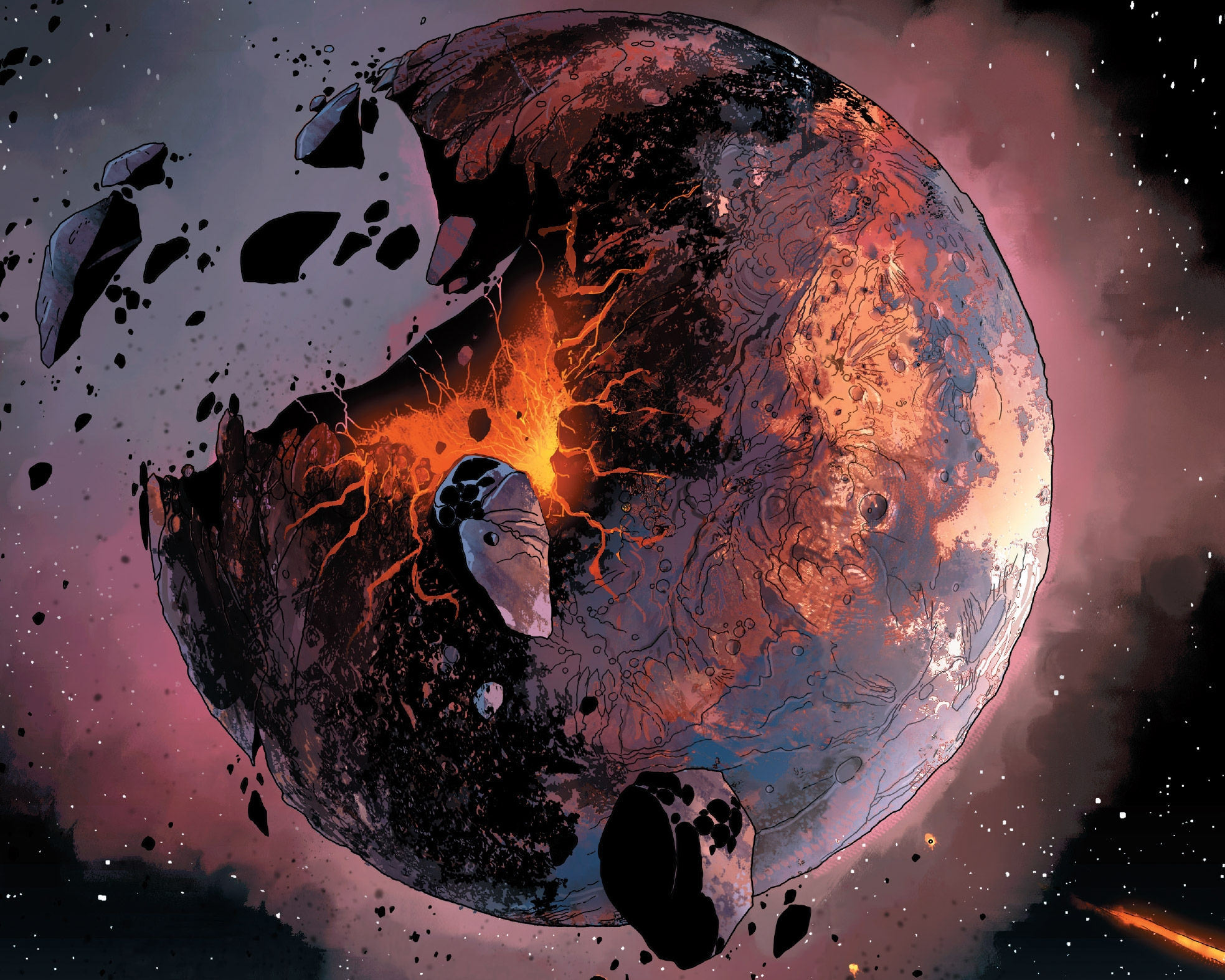
Jedha was ravaged by the Death Star.
The Emperor and Darth Vader continued their purge of the Jedi after the formation of the Galactic Empire, forming the Inquisitorius to aid in hunting down any survivors. Sidious also ordered Project Harvester to gather up the Force-sensitive children of the galaxy in the hopes of training them as dark side adherents to his will. Even so, some Jedi survived the purge and went on to join other religions. For instance, Eeth Koth, though he was later murdered by Vader, became a priest in the Church of the Ganthic Enlightenment. The Jedi teachings also lived on in the form of the Church of the Force, an underground faith of worshipers of the Force that revered the Jedi Order and sought to see the Jedi restored to the galaxy in the wake of the Emperor's purge.
However, despite the persecution of the Jedi Order, a number of religions existed and prospered under the Empire. The cult of the Central Isopter was among the more notable. The cult consisted of Force-sensitive members who received visions of great death and went to those sites to revel in the carnage. They were present at arguably one of the greatest religious catastrophes in galactic history when the holy city on Jedha was destroyed by the Death Star. The blast eradicated centuries of religious history and destroyed a number of sacred sites.
In the Seswenna sector, there were over three hundred distinct religious traditions with active practitioners, all of which were officially recognized by their Imperial administrator. Admiral Conan Antonio Motti, a native of the sector, described himself as a "man of faith."
In the Unknown Regions, the Kilji species followed the Kilji way of order and enlightenment, a series of ancient dictums which established that being should be "enlightened."
During the early rebellion against the Galactic Empire, evidence of the worship of the Mortis gods was uncovered at the Lothal Jedi Temple. Darth Sidious was aware of the Mortis deities, suggesting that both the Jedi and the Sith were at one time aware of and potentially worshiped them. However, the temple was destroyed by Padawan Ezra Bridger after Sidious failed to infiltrate the World Between Worlds.
During the Galactic Civil War, Jedi Masters Obi-Wan Kenobi and Yoda trained a young Luke Skywalker in the ways of the Jedi. Though Luke fought in the war for the Rebel Alliance, he also scoured the galaxy to recover lost Jedi lore. Much of the surviving records of the Jedi, which weren't obtained or destroyed by the Empire, were hoarded by criminals such as the Hutt crime lord Grakkus Jahibakti Tingi. He also discovered a school left behind by Jedi Master Jocasta Nu, which contained countless Jedi holocrons. After completing his Jedi training, Luke faced Darth Vader and the Emperor aboard the DS-2 Death Star II Mobile Battle Station during the Battle of Endor; Vader ultimately sacrificed himself and destroyed the Emperor, at the cost of his own life, in order to save Luke, his son. The returned Anakin Skywalker was thus redeemed in the Force while the Sith were left extinct as foretold by the ancient Jedi prophecy of the Chosen One.
After the battle at Endor, Luke Skywalker set out to fulfill his promise to Yoda by restoring the Jedi Order. Alongside his astromech droid R2-D2 and allies such as Lor San Tekka, Skywalker traveled across the galaxy searching for long-forgotten Jedi lore to help him in his quest to resurrect the Jedi Order. Even so, Skywalker was unsure whether to restore the Jedi Order or if it was best to leave it in the past. Ultimately, however, it would be the volatility and strength of his nephew, Ben Solo, in the Force and his desperate need for a teacher that convinced Skywalker to go through with restoring the Jedi Order. However, Solo was seduced to the dark side of the Force by Snoke, becoming Kylo Ren, and the Jedi Temple of Luke Skywalker was destroyed and his students killed. Overwhelmed with guilt and shame, Skywalker exiled himself to the first Jedi Temple at Ahch-To, where, convinced that it was time for the Jedi religion to end, he planned to die, ending the Jedi Order with him as the last of the Jedi.
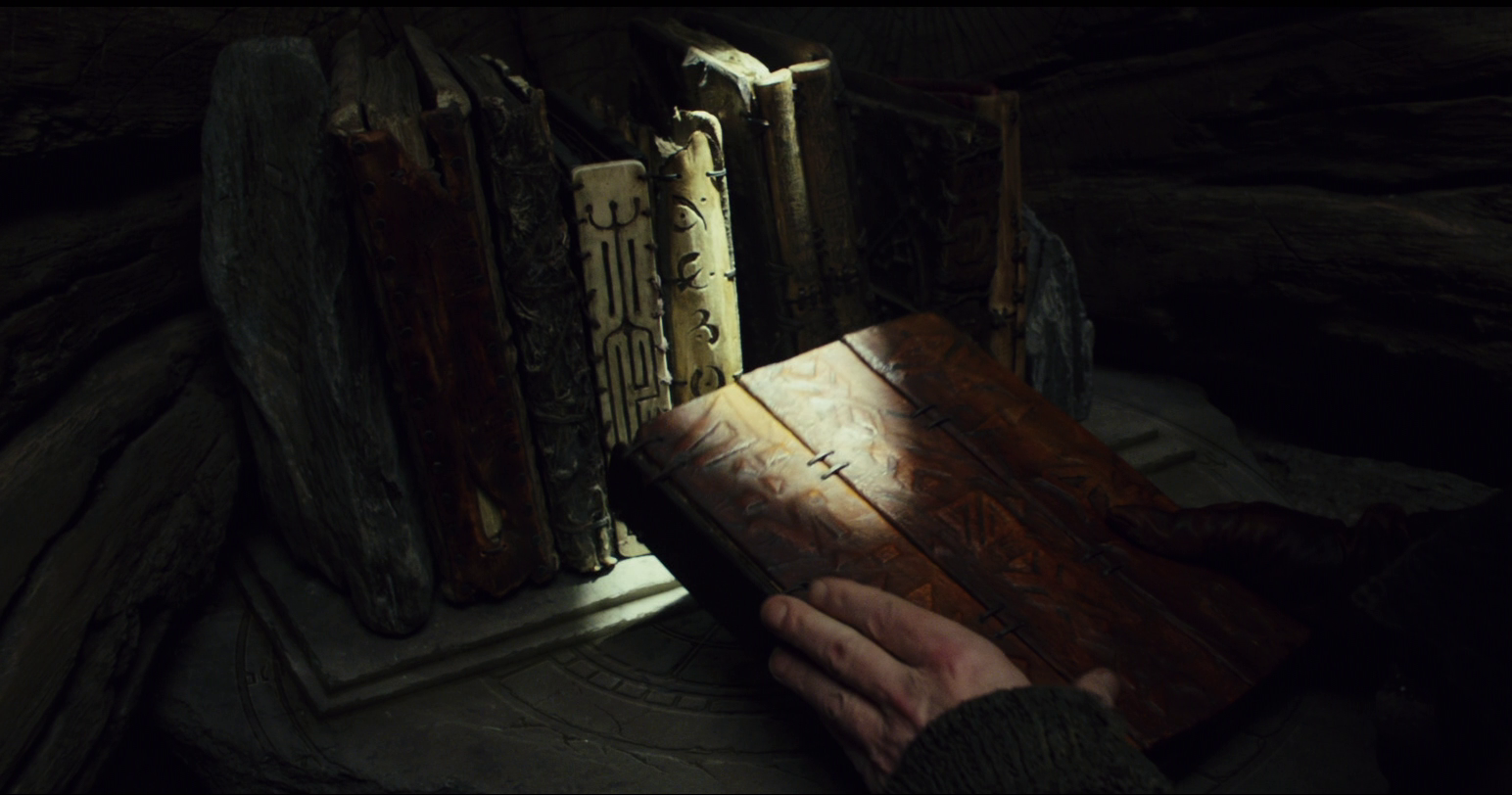
For a time, Luke Skywalker and the sacred Jedi texts were all that remained of the Jedi religion until Skywalker acknowledged Rey as a Jedi.
Shortly before and during the early war between the First Order and the Resistance, Skywalker was sought out by both sides, though ultimately it would be Skywalker's twin sister Leia Organa, the leading General of the Resistance, who reached Skywalker first by sending to him Rey, an orphaned scavenger from Jakku who sought a teacher to help her control her powers in the Force. Skywalker briefly trained Rey, who tried to persuade the Jedi Master to return, but Skywalker also tried to persuade her that it was time for the Jedi religion to end. It would be the spirit of Skywalker's old master Yoda who would convince Skywalker to return after Rey abandoned him, teaching his old student that he could learn from his failure. Skywalker sacrificed himself at the Battle of Crait to distract Kylo Ren, who had become the new Supreme Leader of the First Order after assassinating Snoke with Rey, while Rey, who Skywalker acknowledged as a Jedi, helped the Resistance escape, ensuring that both their cause and the Jedi Order would live on.
The Sith Eternal, a secret group of Sith cultists that continued the religious beliefs of the Sith after their extinction and sought to resurrect its tradition from Exegol, revealed themselves to the galaxy in the year following the battle at Crait, having operated in secrecy for decades under their master, a reborn Darth Sidious. Kylo Ren learned that he was the Sith Eternal's heir to their new Sith Empire, which the Sith cultists planned to establish through the Final Order, but after Ren renounced the dark side and reclaimed his birth identity as Ben Solo, Sidious instead targeted his granddaughter, Rey. Attempting to cultivate her as Empress through a ritual in which he offered himself as a sacrifice to Rey during the Battle of Exegol, Sidious urged his granddaughter to kill him in revenge for having her mother and father assassinated.
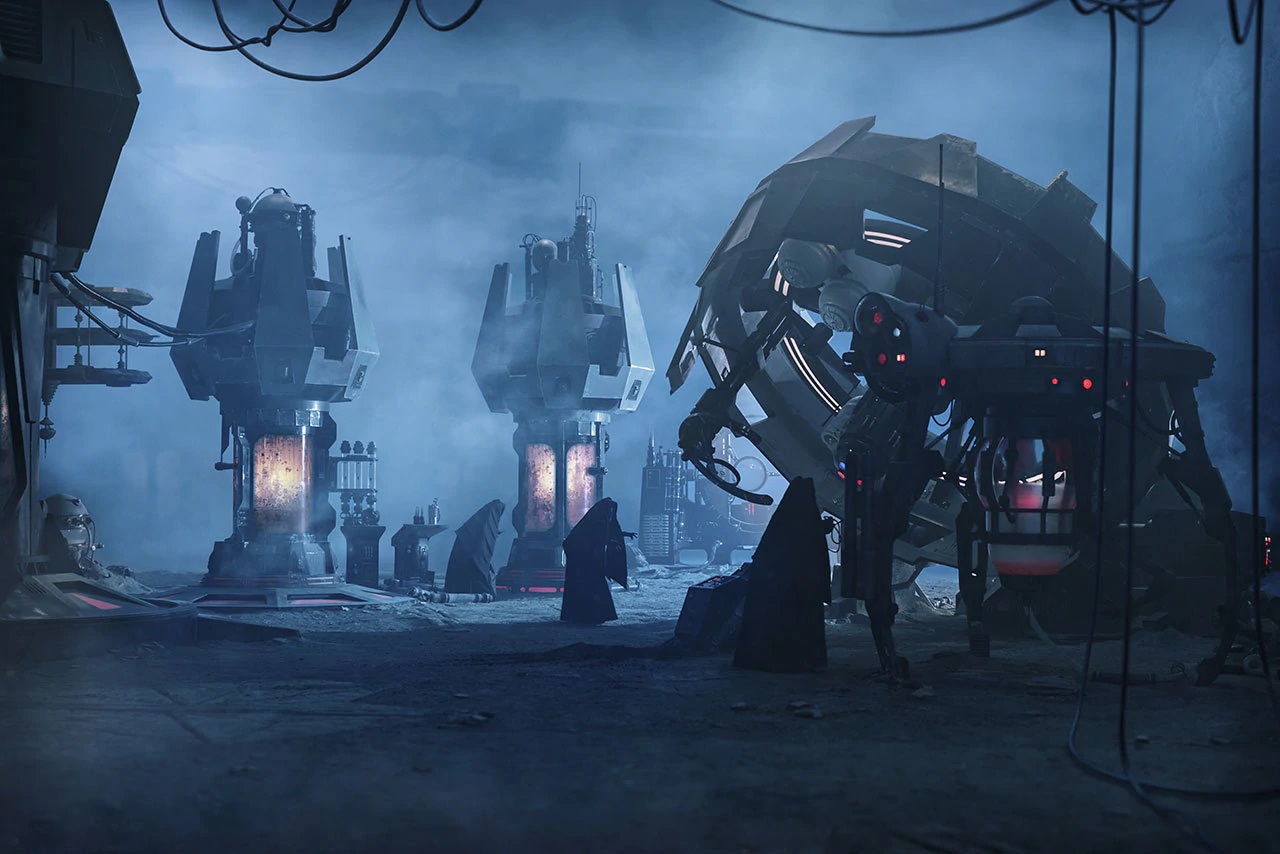
The Sith Eternal was a cult whose members followed Darth Sidious and the ways of the Sith religion.
Had she killed him in anger, the act that would turn her to the dark side and restore the Sith Order as his spirit—and the spirits of the past Sith—would pass into her, leaving Rey's body to become his own. Rey ultimately rejected Sidious with Solo's help, but Sidious restored his strength by drawing on the bond between Rey and Solo, who were a Force dyad. However, Rey was herself restrengthened by the spirits of the past Jedi, and with the Jedi behind her, Rey destroyed Sidious, preventing the Sith from being reborn and the Jedi from being ended. The resulting explosion of Force energy caused the Sith Citadel to collapse in on the Sith Eternal. Rey herself died, but was resuscitated by Solo, who gave his life for hers, allowing the Jedi to live on. Rey went on to claim the name Skywalker in honor of her mentors' family.
George Lucas, the writer of the original and the prequel trilogies, said that, in regards to his Star Wars films and religion, the core teaching to pass on is that all religions in the real world essentially says one thing: compassion, or love. The Force and the Jedi religion, Lucas stated, were thus based on all religions in the real-world, as he constructed Star Wars mainly from Methodism—or Christianity, Islam, and Judaism—and Buddhism. Based on his beliefs, George Lucas explained, one of the the core values of Star Wars, one of the problems of the struggle in Star Wars, is about passion against compassion, which is greed against giving and letting go. Compassion is defined by Lucas as joy, an everlasting emotion attained from being selfless—the light side of the Force—and is one of two components of happiness.
- Star Wars Propaganda: A History of Persuasive Art in the Galaxy
- Star Wars: Galactic Atlas
- Star Wars: The Last Jedi: The Visual Dictionary
- Star Wars Helmet Collection 55
- Star Wars Helmet Collection 55
- Star Wars Helmet Collection 69
- Star Wars Helmet Collection 77
- Star Wars: The Rise of Skywalker: The Visual Dictionary
- "The Noble and the Wild" — Star Wars - The Official Magazine 96
- "Home-grown, home-brewed, self-destroyed" — Star Wars - The Official Magazine 100
- Star Wars: The High Republic: Chronicles of the Jedi
- Star Wars: Timelines